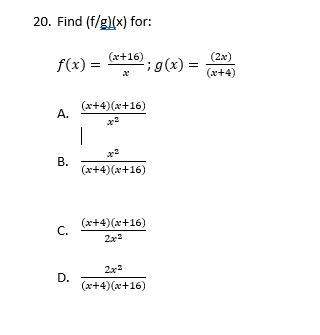
Mathematics, 12.08.2020 07:01 gracie2492
Average Costs per Mile
Suppose that a certain car has the following average operating and ownership costs.
Operating
$0.28
a. If you drive 30,000 miles per year, what is total annual expense for this car?
Ownership
$0.74
Total
$1.02
int
n
b. If the total annual expense for this car is deposited at the end of each year into an IRA paying 7.8% compounded yearly, how much will be saved at the end of nine years? Use the formula A=-
r
n
a. If you drive 30,000 miles per year, the total annual expense for this car is $
(Round to the nearest dollar as needed.)
b. If the total annual expense for this car is deposited at the end of each year into an IRA paying 7.8% compounded yearly, the amount saved at the end of nine years is $0
(Round to the nearest dollar as needed.)

Answers: 1


Another question on Mathematics


Mathematics, 21.06.2019 16:30
Ineed if you could explain and give me the answer you! this needs done
Answers: 1

Mathematics, 21.06.2019 20:30
A. plot the data for the functions f(x) and g(x) on a grid and connect the points. x -2 -1 0 1 2 f(x) 1/9 1/3 1 3 9 x -2 -1 0 1 2 g(x) -4 -2 0 2 4 b. which function could be described as exponential and which as linear? explain. c. if the functions continue with the same pattern, will the function values ever be equal? if so, give estimates for the value of x that will make the function values equals. if not, explain why the function values will never be equal.
Answers: 3

Mathematics, 21.06.2019 21:40
Write the contrapositive of the conditional statement. determine whether the contrapositive is true or false. if it is false, find a counterexample. a converse statement is formed by exchanging the hypothesis and conclusion of the conditional. a) a non-converse statement is not formed by exchanging the hypothesis and conclusion of the conditional. true b) a statement not formed by exchanging the hypothesis and conclusion of the conditional is a converse statement. false; an inverse statement is not formed by exchanging the hypothesis and conclusion of the conditional. c) a non-converse statement is formed by exchanging the hypothesis and conclusion of the conditional. false; an inverse statement is formed by negating both the hypothesis and conclusion of the conditional. d) a statement not formed by exchanging the hypothesis and conclusion of the conditional is not a converse statement. true
Answers: 1
You know the right answer?
Average Costs per Mile
Suppose that a certain car has the following average operating and ownership...
Questions





Mathematics, 19.11.2019 05:31


Mathematics, 19.11.2019 05:31


Mathematics, 19.11.2019 05:31

Mathematics, 19.11.2019 05:31


Mathematics, 19.11.2019 05:31












